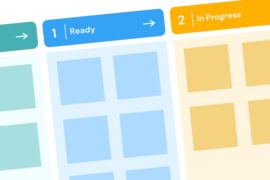I cannot imagine we are alone in this scenario or that it is unique to higher ed (where I work), but we have always had this dilemma – content is created everywhere but there is no single stream of that content. I want to have a stream on, for example, the orthopedic surgery page, of everything created by us, by the university and by faculty and external resources. How do we do that?
When I came up with the idea to create a “content repository,” my grand plan was to keep it under the radar until there was enough content with which to do something. The idea was, either post content natively to this repository or create a record in the repository that linked out to the where the content is posted natively. Each entry, whether native or linked, could be tagged and categorized from which feeds could be created. By doing this, we could then create streams of content (feeds) that encompassed both our own internally created content and any externally created content we wanted to showcase. These feeds were constantly being updated and would give life to our often static websites and areas of content. We came to call this our “ribbon content.” It was a ribbon we weaved throughout all our websites and major areas of content.
I keep saying “areas of content.” I should probably quickly explain that. When you work at a school within a university you have what I used to call “chunks of content.” It is everything from admissions to financial aid to departments and programs. None of those, in and of themselves, are stand-alone websites. They are all part of the school’s website, but they are owned by and treated as distinct “websites” or – as I like to call them – “areas of content.” Therefore, when you see me write “areas of content” you can envision “website” if you want. Our content owners think they are websites. You can too. I just can’t call them websites because to me a website is a unique instance or URL.
Sources of Content for the Repository
I will use our experience as an example, but we have a lot of content that exists in a lot of difference places and crosses multiple disciplines. How do you manage all of that? What does it look like? The primary sources of our content are as follows:
- Internally created content (stories) used primarily for outbound communications.
- Articles and stories written for our print magazines that live on the magazine website that we have no access to or control over.
- Articles and stories written for the university’s digital platform that live on that platform’s website to which we have access via RSS feed.
- Independent and externally hosted newsletter content that we have no access or control over.
We needed to find a way to pull that all together. The first step was to create the repository website – a simple WordPress site that could house content. That is where we started posting all of our internally created content.
Content from feeds
For any content that had a feed, we used the fantastic plugin WP All Import. This plugin allows us to pull in content from a feed and create a Post in our WordPress site that captures the data we need – title, excerpt, featured image, taxonomy and redirects to the original source of content. We are not looking to “steal” or duplicate content. We just want the record of it so we can tag and categorize and use in feeds. WP All Import in combination with the Page Links To plugin allows us to easily import records of content into our WordPress site/repository that we can turn around and feed out to our own areas of content and websites.
Content without feeds
That leaves the content with no feeds. If the content sources do not have a feed, we have to work with it manually. That means, we manually enter basic information like title, excerpt, featured image, and the link where the content lives. We try to minimize doing this, but, at the end of the day, it is worth it to us to spend the time entering this content into our repository because it ultimately means our feeds of ribbon content are richer and updated regularly. Our magazines are only published twice a year and the external content we pull into our feeds is published regularly but we can schedule the time in which we pull it into our repository making the work fairly regular and predictable.
Weaving the ribbon
Once this content creation engine is built and populated and you are fairly certain it is being tagged and categorized correctly, you can start feeding the content out to your own websites and areas of content. For the most part, we try to create our feeds based on categories in WordPress, but sometimes we use tags as well. Here are a few examples.
- Feeds to each of our academic departments with the most recent stories about their department. This uses a category for the department.
- Feeds to our faculty profiles of stories featuring each faculty member. For this we use tags.
- Feeds to our hospitals, clinics and specialities based on content categorized for each hospital, clinic or speciality
- Feeds to our academic programs based on categories
There are a series of cookbooks called “Fix it and Forget it.” That is sort of the mentality I had when I created the repository of ribbon content. We have extremely limited staff resources (two people) and anything that helps us keep content fresh across hundreds of web presences is valuable to us. This content repository turns out to be extremely beneficial to us.





